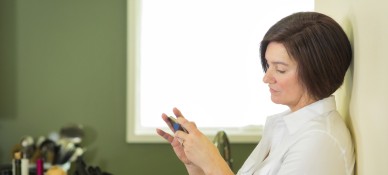A Young Person’s Guide to Tracking Down Leavening
Written by Karen Meeker
What is leavening and how does it work? Why do we throw it out during the Days of Unleavened Bread? How can you be an expert leaven tracker?
![]() NOTE: Parents, this blog was written for children. You can read it to them (providing additional explanation as you go if they are very young) or you can have them read it. We hope it will strengthen their understanding of this aspect of the Days of Unleavened Bread (Leviticus 23:6; 1 Corinthians 5:8).
NOTE: Parents, this blog was written for children. You can read it to them (providing additional explanation as you go if they are very young) or you can have them read it. We hope it will strengthen their understanding of this aspect of the Days of Unleavened Bread (Leviticus 23:6; 1 Corinthians 5:8).
When the children of Israel began their journey to freedom and the land God had promised them, Moses gave them instructions from God: “Remember this day in which you went out of Egypt, out of the house of bondage; for by strength of hand the Lord brought you out of this place. No leavened bread shall be eaten” (Exodus 13:3).
They were to eat unleavened bread instead: “Unleavened bread shall be eaten seven days. And no leavened bread shall be seen among you, nor shall leaven be seen among you in all your quarters” (Exodus 13:7).
What in the world is “leavening”?
Leavening is the ingredient that makes cake batter and cookie and bread dough puff up or rise when it is baked. The most common type of leavening is yeast, a community of tiny living things called microorganisms. Yeast spores are everywhere. You might see them as a fine white film on the surface of fresh grapes the next time you visit a fruit stand. They are so small that there could be as many as 30 to 60 billion spores in two ounces of yeast!
How it operates
Moist or dry yeast is dormant (inactive, sort of like sleeping) until it’s added to warm water and flour. Then watch out! It becomes active, gobbling up sugars found in the flour and water mixture. Yeast has a real sweet tooth! When the gooey mixture is kept warm and the yeast keeps feeding on sugars, it makes new spores every half hour. It also begins to give off a gas called carbon dioxide, which gets trapped in the dough, causing it to expand and rise.
How did the Israelites make bread?
The Israelites had to “grow” their own leavening. They would mix flour and water together and let the mixture sit exposed to wild yeasts in the air. (Today we call such a mixture a “sourdough starter.”) When leavening was needed, the cook took a small amount of starter, added flour and water and placed the mixture in a warm place to rise. Then it was kneaded, shaped into loaves and baked.
How did they make unleavened bread?
When the Israelites left Egypt, they didn’t take any starter with them. So when they made their bread, they simply mixed flour and water together with perhaps a little oil and salt. Since there was no starter to add, they baked it right away and voilà (French for “before you know it!”), they had unleavened bread.
Also known as …
Have you ever wondered exactly what is wrong with leavening? Why can we eat it all year long but not during the Days of Unleavened Bread?
Here’s the reason: Sometimes God uses normal, everyday things to remind us of things that are important to Him. If you read 1 Corinthians 5:6-8 you will see that leavening is used to picture negative characteristics like wickedness (doing bad things) and malice (wanting to hurt someone). During these seven days in the spring, leaven pictures breaking God’s laws—or sin. When we hunt for leavening and throw it out before the Days of Unleavened Bread, we picture our willingness and desire to search out and remove sin from our lives.
Tracking down leavening
To put sin out, we first have to know what it is and how to look for it. The same is true of leavening. This calls for expert detective work, and labels hold the key.
The main words to look for are:
- Baking soda or sodium bicarbonate.
- Baking powder.
- Yeast.
These ingredients can be sneaky, hiding in things like biscuits, bread, cake, cookies, cereals, candy bars, ice cream cones, cornbread, crackers, breading on chicken nuggets, donuts, muffins, pretzels, some tortillas, pancakes and waffles. The more labels you check, the more leavening you will discover. It seems to be everywhere—just like sin.
Round it up, eat it up or throw it out
Before the Days of Unleavened Bread begin, your family will probably try to eat up all the food containing leavening. But don’t be surprised if you’re sent out on a last-minute search party to look in spots around the house for leavening.
A good leavening tracker is always on the lookout.
Karen Meeker has been tracking down and throwing out leavening for well over 50 years, and sometimes it still sneaks in where she least expects it.










